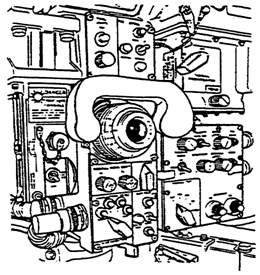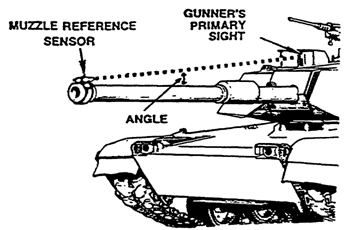Post by someone at http://www.track-link.com/forums/modelling_kits/11957/flat below:
I
beg to differ on your statement "The rubber tires should NOT have
seams". Most tank wheels have seams on them, especially when they are
new. They do wear down over time but often are still visable. Here are
some examples
M13/40
http://svsm.org/gallery/m13-40/IMG_3880
Pz I
http://inmenlo.com/wp-content/uploads/2011/01/Tank-wheels-580.jpg
M-60
http://farm1.static.flickr.com/181/389746048_c0cf7883d5.jpg
M4 Sherman HVSS
http://data.primeportal.net/m4a1/M4a1-04-DSC01075.JPG
Now how much of these would be visable in 1/35?
Roy
And another following post by someone else:
Yes while most real tanks with rubber tires do have seams the problem
with them on a model is 1) the mold seam does not look so much like the
real seam and 2) if you leave them it just looks like you were lazy and
didnt remove the seams. Plus 3) you have big flat spots where the sprues
were anyway. Mostly I totally remove the seams.
One potential problem with the Tamiya kit (or the M13/40 in general) is
that its hard to fit the tracks in place late in the assembly. They wont
fit under the track guards and over the return rollers.
Also in the Tamiya kit they tell you that you can remove the rear part
of the track guards to make a different version, but this results in a
huge, nasty, irregular seam along the hull side. Plus there are big
vertical seams under the engine deck hinges/latches on the sides.
Monday 28 September 2015
Weapons system and stabilization system on M1 Abrams Main Battle Tank
Some of the 'Weapons' section at http://www.inetres.com/gp/military/cv/tank/M1.html below:
 The Hughes infrared Thermal Imaging System (TIS) senses a small difference in heat radiated by objects.
This is converted to electrical signals which are displayed on a cathode ray tube, similar to a TV picture.
This image also is projected into the gunner's eyepiece.
His sight displays target range information, ready-to-fire, and other systems indications.
It also indicates if the laser rangefinder has received more than one return.
The fire control computer has data entry and test panels for fault diagnosis.
The Hughes infrared Thermal Imaging System (TIS) senses a small difference in heat radiated by objects.
This is converted to electrical signals which are displayed on a cathode ray tube, similar to a TV picture.
This image also is projected into the gunner's eyepiece.
His sight displays target range information, ready-to-fire, and other systems indications.
It also indicates if the laser rangefinder has received more than one return.
The fire control computer has data entry and test panels for fault diagnosis.
 A stabilization system permits accurate firing on the move.
The gunner merely places his graticule on the target, and uses the laser
rangefinder to determine the range.
Then a computer applies necessary angles, and the gunner opens fire.
The computer also gets information from a wind sensor and a pendulum
static cant sensor on the turret roof.
The main gun has a muzzle reference system to measure the bend of the
gun.
The gunner manually sets battle sight range, ammunition type, barrel
wear, muzzle reference compensation, barometric pressure, and ammunition
temperature.
A stabilization system permits accurate firing on the move.
The gunner merely places his graticule on the target, and uses the laser
rangefinder to determine the range.
Then a computer applies necessary angles, and the gunner opens fire.
The computer also gets information from a wind sensor and a pendulum
static cant sensor on the turret roof.
The main gun has a muzzle reference system to measure the bend of the
gun.
The gunner manually sets battle sight range, ammunition type, barrel
wear, muzzle reference compensation, barometric pressure, and ammunition
temperature.
WEAPONS


Vertical and horizontal stabilizers on military tanks
Most of the post of someone at http://forums.eugensystems.com/viewtopic.php?t=36145&start=30 below:
The Sherman was one of the first widely produced tanks to feature a gyroscopic stabilized gun and sight. The stabilization was only in the vertical plane, as the mechanism could not slew the turret. The stabilizer was sufficient to keep the gun within 1/8th of a degree, or 2 mils while crossing moderately rough terrain at 15 miles an hour. This gave a hit probability of 70% on enemy tanks at ranges of 300 to 1200 yards.[57] The utility of the stabilization is debatable, with some saying it was useful for its intended purpose, others only for using the sights for stabilized viewing on the move.[58] Some operators disabled the stabilizer.

The Centurion Mark 3 tank had the first mechanical horizontal/vertical stabilization system in 1948.
http://www.liveleak.com/view?i=d5d_1302449828
One of versions of the M48 Patton tank had a two axis mechanical stabilizer that didn't quite work out, it was ripped out and replaced with an electric one in the next version.
The T-54/55 gun system was vertically stabilized in 1953, and horizontally stabilized in 55. It apparently had the most complete mechanical gun stabilization system by 1956. It still wasn't that great at hitting anything while moving due to the lack of a fire control computer.
It's a fasinating subject these stabilizers.
Arena Active Protection Armour in Slow Motion - 18000 FPS HD
https://www.youtube.com/watch?v=YpmcmKwWzYo
Subscribe to:
Posts (Atom)